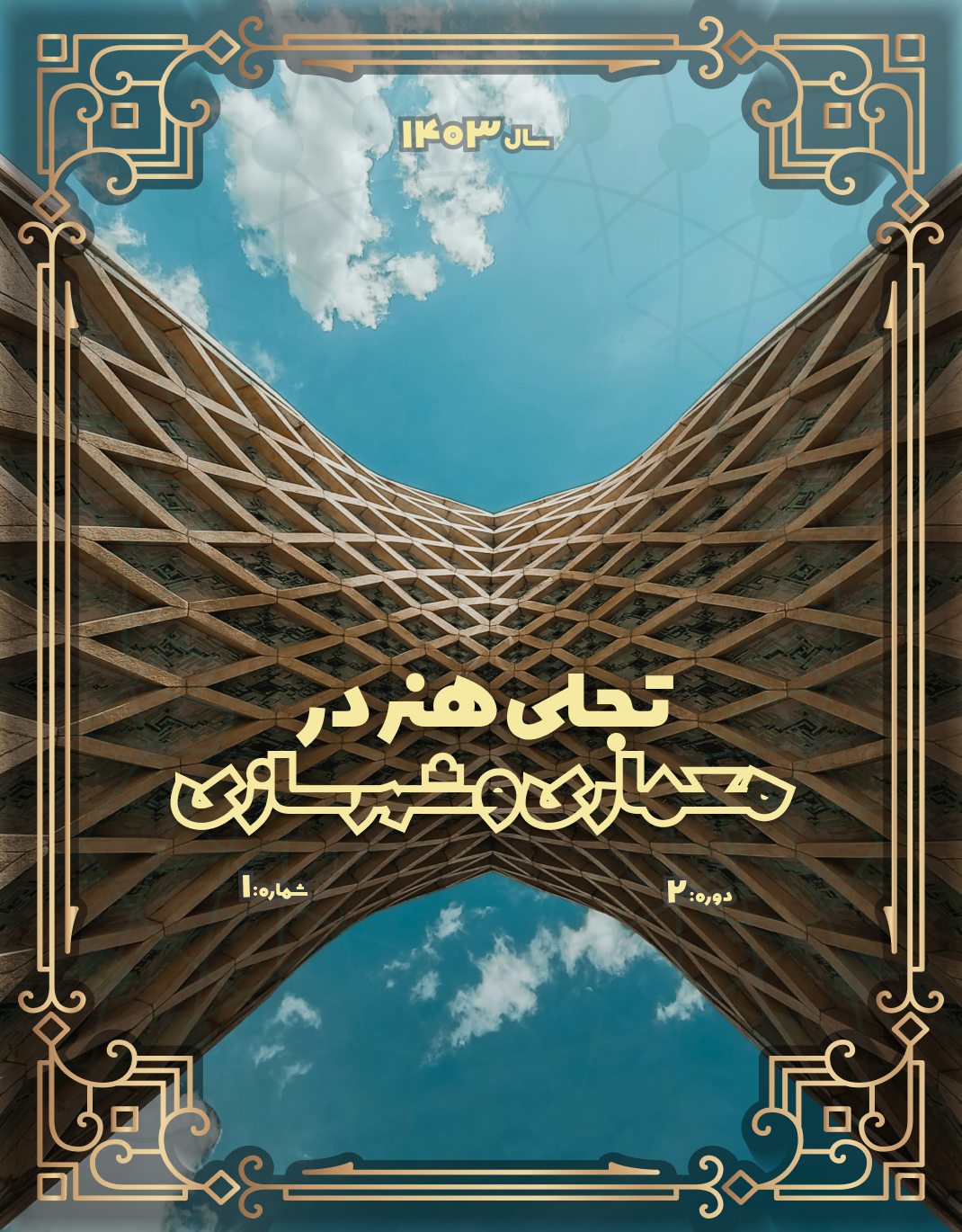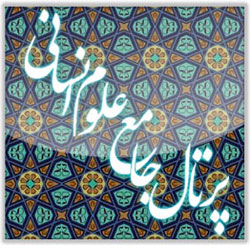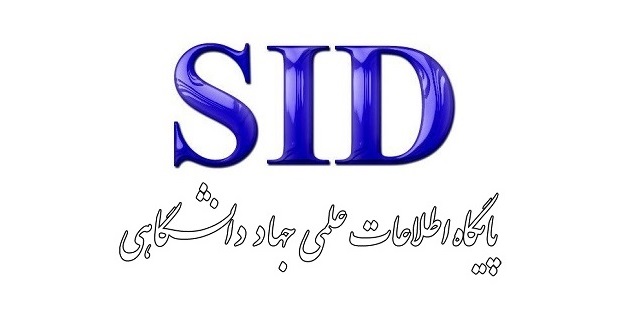The Importance of Revitalizing Traditional Architectural Symbols in the Niyaki Neighborhood of Amol
Keywords:
Amol, indigenous architecture of traditional houses, urban regeneration, cultural heritage, local identityAbstract
The revitalization of traditional architectural symbols in the Niyaki neighborhood of Amol is recognized as a vital process for preserving the cultural and historical identity of this area. This study aims to examine the significance and challenges of revitalizing traditional architectural symbols and to analyze the factors influencing this process. Given the rapid pace of urban transformation and the threats posed by modernization, the necessity for a comprehensive and sustainable approach to the preservation and revitalization of these symbols is increasingly apparent. The primary objective of this research is to identify and analyze the strengths, weaknesses, opportunities, and threats (SWOT) associated with the revitalization of traditional architectural symbols in the Niyaki neighborhood of Amol. Taking into account the importance of preserving cultural and social identity, this study seeks to propose strategies to enhance and facilitate the revitalization process. Furthermore, it explores the social and economic impacts of this process on the neighborhood's residents. This research adopts a qualitative and mixed-methods approach. Data collection was carried out using field methods, including direct observation, semi-structured interviews with neighborhood residents and architectural experts, as well as analysis of historical and cultural documents. The statistical population includes 45 individuals—residents, architects, and local cultural experts—who were selected through purposive sampling. The findings were analyzed using the SWOT technique, which assists in identifying the key factors in the revitalization of traditional architectural symbols. The findings of this study indicate the existence of significant strengths such as the preservation of cultural identity and the potential to attract tourists, while also highlighting serious challenges including lack of public awareness and economic constraints. The study identifies opportunities to support revitalization projects and promote sustainable tourism development, which can contribute to the preservation and enhancement of traditional architectural symbols. The conclusion of this research emphasizes the importance of revitalizing traditional architectural symbols as a means of reinforcing the cultural and social identity of the Niyaki neighborhood of Amol. Considering the existing potentials and the need for financial and educational support, the study offers recommendations to facilitate the revitalization process. In doing so, it aims to preserve and improve the quality of life for residents and strengthen their sense of place and belonging.
Downloads
References
1. Pourhaqvardi N, Ghasemi M, Norouzi M, Daad Talab J. Identifying Challenges and Analyzing Opportunities for Integrating Bionic Architecture with Traditional Native Architectural Methods (Case Study: Bam City). Bagh Nazar. 2025(142):5-26.
2. Heydari Arjloo T, Hassanpour F, Ghorbani Parham A. Identifying and Prioritizing Features of Traditional Houses in Shiraz Using AHP Method. Urban Futures Studies. 2024(14):4-15.
3. Jafarian R, Mahmoudian A. Traditional Iranian Architecture, Thermal Comfort, and Energy Consumption Balance (Case Study: Architectural Fabric of the Historical City of Sirvan). Ilams Studies. 2024(32):94-119.
4. Emosa H, editor Assessing the sustainability of traditional architecture in Nigeria: Insights from Igala traditional building practices. 2ND INTERNATIONAL RENEWABLE ENERGY CONFERENCE (KATSINA 2024); 2024; Umaru Musa Yar'adua University, Katsina.
5. Xie K, Zhang Y, Han H. Architectural heritage preservation for rural revitalization: Typical case of traditional village Retrofitting in China. Sustainability. 2024;16(2):681.
6. Azari SH. Traditional Architecture of Iran from Past to Present. 2018.
7. Soltani M. Analysis and Examination of Characteristics of Traditional Iranian Houses. Tehran: University of Tehran Press; 2019.
8. Baloochistani M, Delshad Siyahkeli M. Reinventing Quality Patterns in Traditional Architecture of Gilan; Case Study: Houses in Lahijan County. Green Architecture. 2021;7(4):23-34.
9. Ouchizi S, Mahdinejad J. Reinventing Architectural Spaces with a Focus on Enhancing Iranian Identity. Researches in Restoration and Iranian Architecture. 2019;2(4):33-45.
10. Ministry of Cultural Heritage Handicrafts and Tourism. Guide to the Restoration of Historical Works and Traditional Buildings. Tehran: Cultural Heritage Organization Publications; 2016.
11. Rozbehani M. City and Architecture: Challenges and Opportunities for Preserving Traditional Architectural Identity in the Modern World. Tehran: Science and Industry Publications; 2021.
12. Najafi R, Khayri A, editors. Reinventing the Architecture and Old Fabrics of Tehran in Urban Design. Second Conference on Contemporary Civil Engineering, Architecture, and Urbanism; 2019 March 2019; Tabriz, Iran: Tabriz University.
13. Li Y, Chen H, Yu P, Yang L. A review of artificial intelligence in enhancing architectural design efficiency. Applied Sciences. 2025;15(3):1476.
14. Athira SB, Amritha PK, Chithra K, Chkeir A, Bouzidi Y, El Akili Z, et al. Defining and analysing traditional architectural knowledge systems: Components and guiding principles in Indian residential architecture through the lens of expertise Assessment of thermal comfort in the traditional and contemporary houses in Byblos: A comparative study. Indian Journal of Traditional Knowledge (IJTK). 2025;24(5):933-45.
15. Ghouchani M, Taji M. Studying the Role of Open Spaces and the Solid and Void Patterns of Houses and Mosques in Traditional Architecture and Its Reinvention in Contemporary Iran. Environmental Studies of Haft Hasar. 2018;7(26):89-102.
16. Santhamoorthy ST, Jethra H, Patel J. Providing Property Search and Visualization Based on Traditional Architecture. Defensive Publications Series, Technical Disclosure Commons. 2024.
17. Shafiei Sarvestani A, editor Reinventing Indigenous Architecture: Integrating Tradition and Modernity in Contemporary Design. First International Conference on Architecture and Urban Planning for Sustainable and Inclusive Design for All; 2020; Shiraz.
18. Izadi H. Sustainability of Traditional Architecture Against Climate Changes: Isfahan. Tehran: University of Isfahan Press; 2017.
19. Saeidi A. Case Study of Northern Iranian Houses' Architecture and Use of Local Materials. Tehran: House of Book Publications; 2021.
20. Tran DT. Form of Traditional Architecture in the Northern Delta-Vietnam. Proceedings of 7th International Conference on Civil Engineering and Architecture. 2025;2.
21. Wadhwa S, Piparsania K. Biophilic Design in Traditional Architecture: Exploring Sustainable Practices in Indigenous Kitchens and Analysing the Strategy for Small Commercial Kitchens2024. 534-41 p.
22. Charani S, Donyadideh A, Ayaz H, editors. Reinventing Architectural Symbols of India in the Context of Contemporary Architecture - Designing a Case Study for the Indian Embassy in Tehran. International Conference on New Horizons in Civil Engineering, Architecture, and Urban Development; 2018; Tehran.
23. Yanan L, Ismail MA, Aminuddin A. How has rural tourism influenced the sustainable development of traditional villages? A systematic literature review. Heliyon. 2024;10(4):e25627.
24. Kaur J, Verma N, Chandra Reddy TB. History and Theory of Design in Traditional Temple Architecture of India. International Journal for Multidisciplinary Research. 2024;6(3).
25. Jorak A, Bina M, editors. Examining the Role of Reinventing Past Architectural Patterns in Defining Identity in Architecture. Third National Conference on New University Researches in Art, Architecture, and Civil Engineering; 2019; Tehran.
26. Redyantanu BP. Inregration, Relation, and Recreation: Rethinking Architectural Programming. 2025.
27. Fallica S, Garozzo R, Santagati C. Retraced memories - virtual reconstruction of an architectural landmark. Virtual Archaeology Review. 2021.
28. Melania Jaloudar S, Rasouli SH, Tabali Z. Identifying Factors Influencing Citizens' Trust in the Performance of Sari Municipality. Applied Geographic Research. 2023;23(70):323-42.
Downloads
Published
Submitted
Revised
Accepted
Issue
Section
License
Copyright (c) 2024 زهره سنایی, علی اصغرزاده (نویسنده)

This work is licensed under a Creative Commons Attribution-NonCommercial 4.0 International License.










